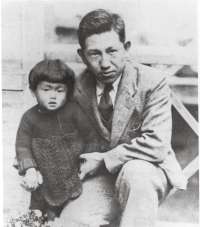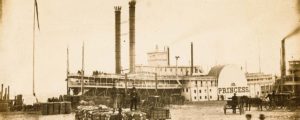 Amid the ruins of postwar Japan, a strange book leaped to the top of the bestseller list. Its author was dead and, just months earlier, in abject disgrace: Hotsumi Ozaki was the only Japanese to be formally tried for treason and hanged during the war. Convicted in a secret trial of passing information to the notorious Soviet spy Richard Sorge, he was executed the same day as Sorge, November 7, 1944. Forty-three years old, he left behind a wife and fifteen-year-old daughter.
Amid the ruins of postwar Japan, a strange book leaped to the top of the bestseller list. Its author was dead and, just months earlier, in abject disgrace: Hotsumi Ozaki was the only Japanese to be formally tried for treason and hanged during the war. Convicted in a secret trial of passing information to the notorious Soviet spy Richard Sorge, he was executed the same day as Sorge, November 7, 1944. Forty-three years old, he left behind a wife and fifteen-year-old daughter.
Even under the best of circumstances Ozaki was hardly the kind of man to fire the public imagination. As a journalist before the war he had made a modest name for himself as a China expert, cranking out dull analytical stories on foreign policy, the kind that people always mentioned with dutiful admiration but never actually read. His first editor recalled Ozaki as a near-total flop: “Both his news sense and his writing style were completely hopeless. He was affable and unpretentious, but what he wrote as newspaper copy was uniformly mediocre.” In an article for his school alumni magazine, Ozaki himself ex-pressed disdain for the “aggressiveness” he admitted was required to be a successful journalist. He was a man of contemplation, not action.
Despite a cosmopolitan taste for Western liquor and English cigarettes—and a long string of mistresses—even his involvement in international espionage had more the air of a university professor than of James Bond. Though he sympathized intellectually with Marxism, it was unlikely that he even thought of himself as a spy while relaying to Sorge what he knew about Japan’s strategic intentions—until his arrest in October 1941. Even more surprising than Ozaki’s transformation from “an extraordinary traitor in the eyes of his compatriots prior to August 15, 1945” to “an even more remarkable hero and martyr figure thereafter” (as historian John W. Dower writes in Embracing Defeat) was the subject of his posthumous 1946 bestseller.
Love is Like a Falling Star is a collection of intimate letters Ozaki had written to his wife and daughter during his three years’ imprisonment. In sharp contrast to his previous philandering and a coldness toward his family typical of Japanese men—not to mention decades of social indoctrination which had stressed that devotion to the emperor must transcend any personal feelings—Ozaki’s letters were filled with open expressions of love and an elevation of affection over loyalty to the state. Facing imminent execution, he cultivated not just an emotional but an intellectual equality with his wife of a kind he had always previously disdained in his relations with women (a friend noted his “feudal” attitude toward women in general). Women readers snapped up the book in droves.
But so did Japanese men eager to find meaning and a way forward through the stunning upheaval that had befallen the whole of Japanese society. Ozaki’s letters were striking not just for their personal intimacy but for their individualism and humanism, so at odds with the ultranationalism and emperor worship of the prewar and war years. Ordered to produce a “recantation” for the authorities while in prison, Ozaki—as many of the letters to his wife recount—immersed himself in a deeply introspective intellectual journey, reading classic works of history, philosophy, and Zen Buddhism. Then he stunned his interrogators with a courageously defiant prediction of Japan’s inevitable defeat and a utopian vision of a coming age of social revolution and world peace.
As Dower notes, there was a less exalted side to Ozaki’s appeal to postwar Japan: “He served a popular need for icons of Japanese suffering.” Ozaki was an undeniable martyr of the regime that had led the nation to disaster and defeat; identifying with such a heroic victim helped nurture a feeling that all of Japan was merely a victim, too.
Love is Like a Falling Star remained on Japan’s bestseller list for three years, incidentally making his widow a very wealthy woman, while doing much to reconcile Japanese society to its defeat, surrender, occupation—and renunciation of the militarism that for centuries had been inseparable from Japanese national identity.




